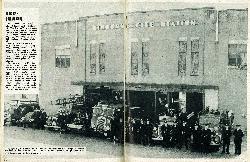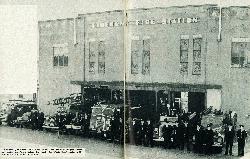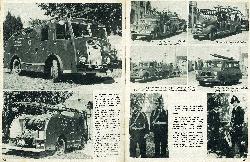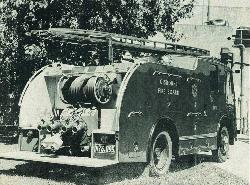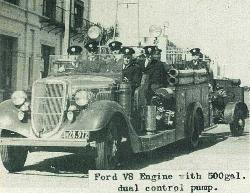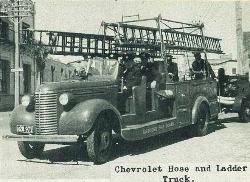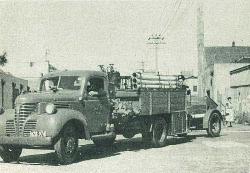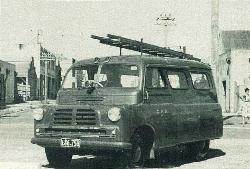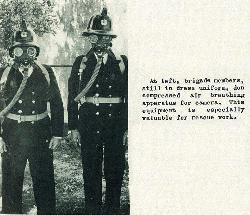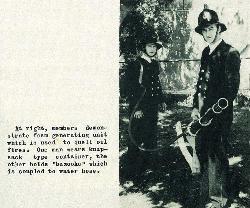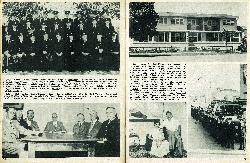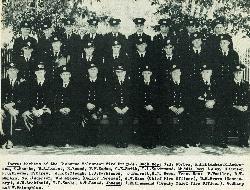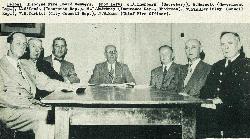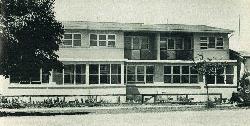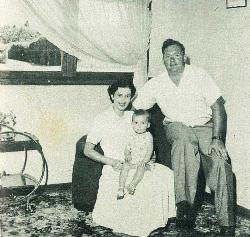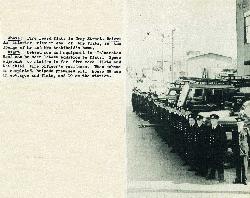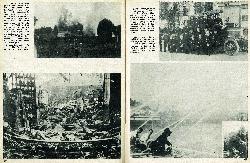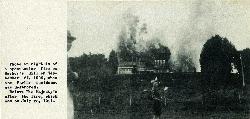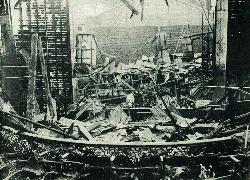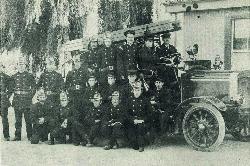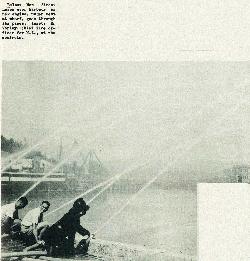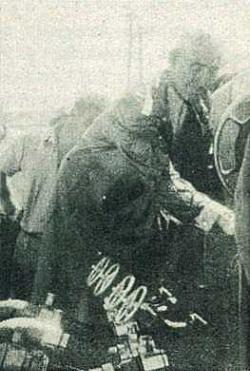34
Gisborne Fire Brigade
Last month the Gisborne Fire Brigade took delivery of New Zealand's most modern fire engine, a new Dennis machine powered with a Rolls Royce engine which is capable of pumping up to 700 gallons of water a minute.
The occasion marked a big step forward in the long-range policy which has now brought Gisborne's Fire Brigade to a position where it is the envy and admiration of fire fighting authorities throughout the Dominion.
In the words of Mr T. A. Varley, chief fire service officer for New Zealand, it is in many respects "years ahead of its time", especially in the provision of housing on station property. Within two years from now, it is expected that the brigade will be able to house all its personnel, both permanent and voluntary, on the premises.
Equipment, and officers and men of the Gisborne Fire Brigade, drawn up outside the fire station last week for "Photo News" picture. The new Dennis engine is in centre.
35
36
The new Dennis engine: two close-up pictures which show the modern design and layout of Gisborne Fire Brigade's latest acquisition. Cab-over-engine accommodation for driver gives good visibility. Space for firemen behind driver is enclosed, giving greater comfort and safety on the road. Two thousand feet of hose can be carried in compartments.
Rear view shows controls for pumping. The small reel hose is for immediate use from 300 gallons of water carried by the vehicle. Once the main inlet and outlet gear is connected, powerful pump can handle eight 60ft jets.
37
Ford V8 Engine with 500gal. dual control pump.
Chevrolet Rose and Ladder Truck.
Fargo Engine with 450gal. pump, overland hose-laying equipment, and foam generating plant
Utility Van carries mobile pump, ladders, etc.
In addition to new engine Gisborne brigade has selection of vehicles shown above.
Brigade members, still in dress uniform, don compressed air breathing apparatus for camera. This equipment is especially valuable for rescue work.
Members demonstrate foam generating unit which is used to quell oil fires. One man wears knapsack type container, the other holds "bazooka" which is coupled to water hose.
38
Members of the Gisborne Volunteer Fire Brigade. Back Row: S. H. Forbes, K. H. Bloxham, R. Anderson, C. Hacche, W. A. Lamont, B. Bound, P. F. Naden, C. E. Smith, P. L. Stairmand. Middle Row: A. Cox, G. Sutton R. G. Browne, F. Capes, J. L. C. Clough, B. J. Parkinon, J. Barrett, R. J. Owen. Front Row: P. Wooller, R. W. Martin, N. J. Anderson, W. J. McLeod (Senior Foreman), J. W. Kane (Chief Fire Officer), D. H. Brown (Secretary), A. W. Archibald, T. P. Smale, A. T. Bound. Absent: A. E. Drummond (Deputy Chief Fire Officer), G. Sharp and W. McLaughlan.
Gisborne Fire Board Members. From left: J. A. Thorburn (Secretary), W. Harnett (Government Rep.), M. O'Dowda (Insurance Rep.), M. J. McArtney (Insurance Rep., Chairman), W. Findlay (City Council Rep.), W. B. Turbitt (City Council Rep.), J. W. Kane (Chief Fire Officer).
39
The Gisborne Fire Board's policy of housing its personnel handy to the station, in station flats, has proved the answer to a problem which has concerned every other volunteer brigade in the country. This policy has been dear to the heart of the board's chief fire officer, Mr Kane, who has held that position since 1919, and in another two years he hopes to see it completed.
Fire Board flats in Grey Street.
An interior view in one of the flats, in the lounge of Mr and Mrs Archibald's home.
Behind men and equipment in Palmerston Road can be seen latest addition to flats. Space adjacent to station is for five more flats and the chief fire officer's residence. When scheme is completed, brigade premises will house 20 men in cottages and flats, and 10 on the station.
40
It is a good many years now since Gisborne Fire Brigade had to fight a major fire, but such occasions do come, sometimes with devastation suddenness.
Two of the most notable fires in living memory were at the old Garrison Hall and at His Majesty's Theatre in Customhouse Street.
41
Gisborne Fire Brigade's first motor fire engine, a Commer bought in 1909, with members of the brigade grouped about. At right is old fire station, an iron shed which was on site of present women's restroom.
Men direct hoses over harbour as new engine, under test at wharf, goes through its paces.
Inset: Mr Varley, chief fire officer for N.Z., at the controls.


